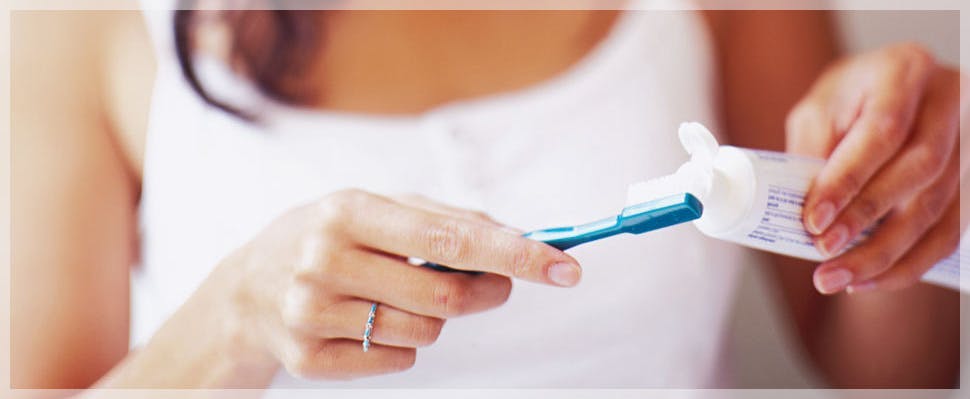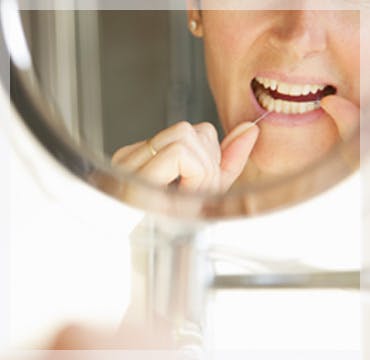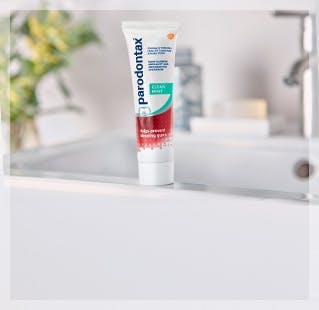Healthy gums don’t bleed, so if your spit is pink after brushing or flossing, it could be an early sign of gum disease. If caught early on, the effects of gum disease are reversible.
Bleeding gums are often caused by the build-up of plaque around, on, and between your teeth. Unless removed (usually by brushing), this bacteria can irritate your gums, causing them to bleed.
So, here are six simple tips you can use in your daily oral care routine to reduce your risk of seeing blood when you brush:

Two for two
Brushing helps remove plaque and food particles. Brush for two minutes twice a day, ideally using a fluoride toothpaste, like parodontaxTM.

Know your angles
Use a circular or elliptical motion and point the toothbrush down towards the gum at a 45 degree angle. For the inside surfaces of your front teeth, tilt the brush vertically and use the front part to make small, circular strokes.

Be gentle
When it comes to teeth cleaning, brushing harder is not better. In fact, brushing too roughly or too much, or using a worn toothbrush can be hard on your gums. You should also replace your toothbrush every three months.

Get your whole mouth
Make sure you clean every corner of your mouth, including hard to reach areas like between your teeth. Move the toothbrush methodically around your mouth, covering the outer and inside surfaces.

Don’t forget your gum line
Be especially careful to brush plaque away from your gum line as well as from the gaps between your teeth. Along with regular flossing or using interdental brushes, this can help you control plaque buildup.

And don’t forget your tongue
Good oral hygiene isn’t just about your teeth and gums. Brushing your tongue gently can also help freshen your breath and clean your mouth by removing bacteria.






